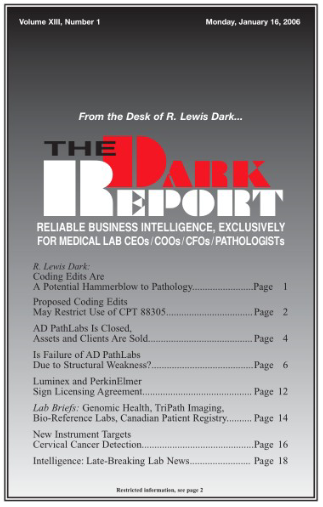CEO SUMMARY: When the Medicare contractor tasked with developing MUEs (Medically Unbelievable Edits) for this year’s Correct Coding Initiative work released the proposed list of edits to the AMA, it didn’t take long for the bad news to reach the pathology profession. Restriction on units of service per patient are proposed for approximately 80 pathology […]
To access this post, you must purchase The Dark Report.


